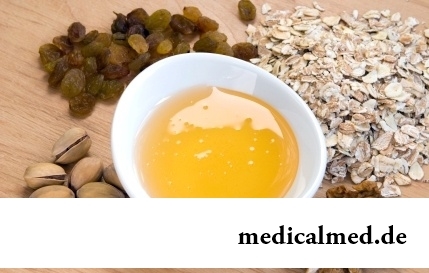





Co-trimoxazole
Application instruction:
 Co-trimoxazole – the combined antimicrobic sulfanamide drug.
Co-trimoxazole – the combined antimicrobic sulfanamide drug.
Form of release and structure
- Tablets of 120 mg (on 10 pieces in packagings planimetric cell, 3 packagings in a pack cardboard; on 20 pieces in banks, 1 bank in a pack cardboard; on 10 pieces in packagings of planimetric bezjyacheykovy, 100 packagings in a box cardboard);
- Tablets of 480 mg (on 10 pieces in blisters, 1 or 2 blisters in a pack cardboard; on 10 pieces in packagings planimetric cell, 3 packagings in a pack cardboard; on 20 pieces in banks, 1 bank in a pack cardboard; on 10 pieces in packagings of planimetric bezjyacheykovy, 100 packagings in a box cardboard);
- Tablets of 960 mg (in packagings on 10, 20, 100 or 500 pieces);
- Suspension for intake (on 50, 100 or 125 mg in dark glass bottles, 1 bottle complete with a dosing spoon in a pack cardboard);
- Granules for preparation of suspension for intake (on 4,8 g in bottles of 100 ml, in packaging of 1 or 20 bottles).
Active agents as a part of drug:
- 1 tablet of 120 mg: sulfamethoxazole – 100 mg and Trimethoprimum – 20 mg;
- 1 tablet of 480 mg: sulfamethoxazole – 400 mg and Trimethoprimum – 80 mg;
- 1 tablet of 960 mg: sulfamethoxazole – 800 mg and Trimethoprimum – 160 mg;
- 5 ml of suspension: sulfamethoxazole – 200 mg and Trimethoprimum – 40 mg;
- 5 ml of the suspension prepared from granules: sulfamethoxazole – 200 mg and Trimethoprimum – 40 mg.
Indications to use
Monotherapy:
- Respiratory infections: acute and chronic bronchitis, bronchial pneumonia, lung and pneumocystic fever, bronchoectatic disease;
- Digestive tract infections: cholera, a salmonellonositelstvo, a cholangitis, dysentery, a paratyphoid, cholecystitis, a typhoid and the gastroenteritis caused by enterotoksichny strains of Escherichia coli;
- Infections of ENT organs: quinsy, laryngitis, sinusitis, scarlet fever, average otitis;
- Infections of urinogenital bodies: gonorrhea (men's and women's), inguinal granuloma, venereal lymphogranuloma, venereal ulcer, epididymite, prostatitis, pyelitis, cystitis, pyelonephritis, urethritis;
- Infections of soft tissues and skin: wound fevers, furunculosis, acne, pyoderma.
Complex therapy:
- Acute brucellosis;
- Toxoplasmosis;
- Plasmodium falciparum;
- South American zymonematosis;
- Acute and chronic osteomyelitis;
- Other osteoarticulary infections.
Contraindications
Absolute:
- Renal failure (clearance of creatinine less than 15 ml/min.);
- B12 - scarce anemia;
- Aplastic anemia;
- Liver failure;
- Deficit glyukozo-6-fosfatdegidrogenazy;
- Agranulocytosis, leukopenia;
- Hyperbilirubinemia at children;
- Children's age up to 3 months;
- Pregnancy and lactation;
- Hypersensitivity to drug or other streptocides.
Relative:
- Bronchial asthma;
- Deficit of folic acid;
- Diseases of a thyroid gland;
- Renal failure and liver;
- Allergic reactions in the anamnesis.
Route of administration and dosage
Co-trimoxazole should be accepted inside in time or after food.
From granules prepare suspension. For this purpose add 100 ml of boiled water to a bottle and carefully mix.
The recommended drug doses in the form of tablets:
- Adults and children are more senior than 12 years: 960 mg are 1 times/days old or on 480 mg 2 times/days, in hard cases – on 480 mg 3 times/days, at persistent infections – on 480 mg 2 times/days;
- Children of 6-12 years: on 240-480 mg 2 times/days;
- Children of 2-6 years: on 120-240 mg 2 times/days;
- Children of 1-2 years: on 120 mg 2 times/days.
The recommended drug doses in the form of the suspension including prepared from granules:
- Adults and teenagers are more senior than 12 years: on 960 mg 2 times/days;
- Children of 7-12 years: on 480 mg 2 times/days;
- Children of 4-6 years: on 240-480 mg 2 times/days;
- Children from 7 months to 6 years: on 120-240 mg 2 times/days;
- Children of 3-6 months: on 120 mg 2 times/days.
Duration of treatment depends on the indication and the overall clinical picture, usually makes from 5 to 10 days. After clinical symptoms of a disease disappear, administration of drug should be continued within 2 days. Therapy of an acute brucellosis lasts 3-4 weeks, a paratyphoid and a typhoid – 1-3 months. Treatment of persistent infections longer.
For prevention of a recurrence of persistent infections of an urinary system Co-trimoxazole is appointed to adults and teenagers 12 years on 480 mg of 1 times a day for the night, to children up to 12 years – on 12 mg/kg/days are more senior. The course can last from 3 to 12 months.
At acute cystitis at children at the age of 7-16 years appoint 480 mg 2 times/days within 3 days.
The recommended dose at the pneumonia caused by Pneumocystis carinii makes 120 mg/kg/days in stages bucketed 6 hours for 14 days.
The initial dose at typhus makes 3 times/days on 960 mg, after heat falling off the dose is reduced to 960 mg by 2 times/days, treatment is continued within at least 2 weeks. To children the dose is reduced twice.
To patients with gonorrheal pharyngitis Co-trimoxazole is appointed in case of hypersensitivity to penicillin: in a dose of 4320 mg once in days within 5 days.
At some diseases at adults the doctor can recommend a single dose of drug or carrying out short-term courses. For example:
- Uncomplicated cystitis at women: 2400 mg once with a large amount of water;
- Shankroid: 3840 mg once with a large amount of water;
- Uncomplicated acute gonorrhea: 2400 mg once, 8 hours later – reception of a similar dose.
More than 25 ml/minute dose adjustment is not required to patients with a renal failure at the clearance of creatinine (CC), at KK from 15 to 25 ml/minute appoint a standard dose during the first 3 days of therapy, further – on ½ standard doses. Patients with KK less than 15 ml/minute can apply ½ standard doses only provided that the patient passes a hemodialysis.
Side effects
- From bodies of a hemopoiesis: agranulocytosis, thrombocytopenia, megaloblastny anemia, neutropenia, leukopenia;
- From a nervous system: вертиго, headache; in some cases – a tremor, apathy, peripheral neuritis, a depression, aseptic meningitis;
- From respiratory system: pulmonary infiltrates, bronchospasm;
- From the alimentary system: stomatitis, glossitis, gastritis, diarrhea, abdominal pain, loss of appetite, cholestasia, nausea, vomiting, increase in activity of hepatic transaminases, pseudomembranous coloenteritis, гепатонекроз, hepatitis;
- From an urinary system: a hamaturia, a crystalluria, a giperkreatininemiya, a polyuria, increase in concentration of urea, a renal failure, intersticial nephrite, a toxic nephropathy with an oliguria and an anury;
- From a musculoskeletal system: mialgiya, arthralgia;
- Allergic reactions: rash, itch, exfoliative dermatitis, hyperemia of scleras, Quincke's disease, fervescence, allergic myocarditis, photosensitization, toxic epidermal necrolysis, multiformny exudative erythema;
- Others: hypoglycemia.
Special instructions
At prolonged treatment (more than 1 month) it is regularly necessary to do blood test since there is a risk of emergence of hematologic changes (including symptomless). These changes can be reversible thanks to reception of folic acid (in a daily dose of 3-6 mg), at the same time antimicrobic activity of drug significantly is not broken. Extra care should be observed at treatment of elderly people and patients with suspicion on initial shortage of folates. Additional purpose of folic acid is also reasonable at prolonged treatment by Co-trimoxazole in high doses. Besides, at prolonged treatment it is necessary to watch a functional condition of a liver and kidneys.
In order to avoid development of a crystalluria it is necessary to provide adequate water loading and to support the sufficient volume of the emitted urine. At decrease in filtrational function of kidneys the risk of development of allergic and toxic complications of streptocides considerably increases.
During treatment it is recommended to avoid excessive solar and ultra-violet radiation, and also to exclude from a diet products which contain in large numbers paraaminobenzoic acid (PABK), such as tomatoes, carrots, green parts of plants (spinach, a cauliflower and bean).
At patients with a syndrome of the acquired immune deficit (AIDS) the risk of development of side effects is much higher.
Because of eurysynusic resistance of strains it is not recommended to appoint Co-trimoxazole at the pharyngitises and tonsillitis caused by a beta and hemolitic streptococcus of group A.
Medicinal interaction
- Derivatives of salicylic acid: effect of Co-trimoxazole amplifies;
- Methotrexate: its toxicity increases;
- Hypoglycemic drugs: their action amplifies;
- Indirect anticoagulants: their activity increases;
- Phenytoinum, warfarin: intensity of their hepatic metabolism decreases, effects amplify;
- Oral contraceptives: their efficiency decreases;
- Procainum, benzocaine, procaineamide and other medicines as a result of which hydrolysis PABK is formed: reduce effect of Co-trimoxazole;
- Rifampicin: Trimethoprimum elimination half-life is reduced;
- Pyrimethaminum in doses more than 25 mg/week: the risk of development of megaloblastny anemia increases;
- Diuretics (especially tiazida): the risk of development of thrombocytopenia, especially at elderly people increases;
- P-aminosalicylic acid, Phenytoinum, barbiturates: manifestations of deficit of folic acid amplify;
- Colestyraminum: Co-trimoxazole absorption decreases (in this regard drug should be accepted through in 1 hour prior to or in 4-6 hours after reception of Colestyraminum);
- The drugs oppressing a marrowy hemopoiesis: the risk of a miyelosupressiya increases;
- Indometacin, Butadionum, Naproxenum, salicylates and some other non-steroidal anti-inflammatory drugs: strengthening of effect of Co-trimoxazole with development of undesirable effects is possible;
- Chloridinum: antimicrobic effect of drug amplifies.
Between diuretics (furosemide, tiazida, etc.) and peroral hypoglycemic drugs (sulphonylurea derivatives), on the one hand, and antimicrobic streptocides, on the other hand, development of cross allergic reaction is possible.
Terms and storage conditions
To store in dry, protected from light and the place, unavailable to children. Tablets and granules – at a temperature of 15-25 ºС, suspension – at a temperature up to 15 ºС.
Period of validity of tablets – 5 years, suspension and granules – 2 years. The suspension prepared from granules can be stored within 2 weeks at the room temperature, up to 4 weeks – in the refrigerator.
The American scientists made experiments on mice and came to a conclusion that water-melon juice prevents development of atherosclerosis of vessels. One group of mice drank usual water, and the second – water-melon juice. As a result vessels of the second group were free from cholesteric plaques.

There is a lot of fans of beer in our country. Statistically, on each average Russian (including women and children) in...
Section: Articles about health
The trophic ulcer is not an independent disease. This heavy complication arising owing to a thermal injury (a burn or a frostbite), chronic pathologies of arteries or veins of the lower extremities, a diabetes mellitus, and also some defeats of a soyeda...
Section: Articles about health
Tick-borne encephalitis – one of the most dangerous viral diseases which causative agents transfer and is given to people by ixodic mites. These are the small blood-sicking insects living in the considerable territory of our country. The person bitten by a tick can catch also erlikhiozy, bartonnelezy, babeziozy, mycoplasmosis and Lyme's disease. As well as encephalitis, these illnesses affect the central nervous system, and as specific antiviral therapy does not exist, the forecast very to a neuta...
Section: Articles about health
About 10-15 years ago existence of the computer in the apartment of the Russian was considered as a rarity and office rooms were only on перв...
Section: Articles about health
Smoking not only exerts a negative impact on the state of health of the consumer of tobacco products, but is an air polluter the substances potentially dangerous to people around. In recent years significantly the number of people, стремящ increased...
Section: Articles about health
Weakness of an ankle joint – very widespread problem. Its existence is demonstrated by tendency to a podvorachivaniye of legs when walking on heels, frequent painful sprains, pain on average and anonymous toes even after small loadings. Usually people with such pathology take off unpleasant effects by means of the anesthetizing pulverizing and ointments, but it does not lead to radical elimination of a problem. Meanwhile, at the known persistence it is possible to strengthen an ankle to the house...
Section: Articles about health
Health and attractiveness - eternal values, pursuing which people often use the most unusual ingredients and technicians...
Section: Articles about health
Is told about advantage of domestic animals for development of the child much. But many parents nevertheless do not hurry to bring pets as are afraid that they can do harm to health of children. What troubles can really trap kids and how to make with...
Section: Articles about health
Quite large number of people adheres to the principles of vegetarian food. But how to be if in a family of vegetarians there are children? Whether it is possible to eat also it the same as to parents, or after all the children's organism is not adapted for the use of exclusively vegetable food? Let's try to understand....
Section: Articles about health
Partial and the more so full loss of hearing significantly reduces quality of life. Difficulties with communication lead to loneliness and замкн...
Section: Articles about health
Iodine - one of thirty most important microelements in our organism. The main role of iodine consists in synthesis of thyroid hormones of a thyroid gland - the substances which are responsible for the majority of exchange processes of an organism. It is known that thyroid hormones consist...
Section: Articles about health
The main role in development of a peptic ulcer of a stomach and duodenum the bacterium Helikobakter plays pilor. Activity and the strengthened reproduction of this microorganism lead to weakening of protection of mucous membranes and their erosive damage. Displays of an illness seriously reduce quality of life: patients regularly test attacks of severe pain, heartburn, nausea. On this background also psychoemotional malfunctions develop: a kidney-vetch, as a rule, shows an acrimony, ча...
Section: Articles about health
Each person supports all life a SARS about 200 times. The peak of incidence falls on cold season, but to get sick from temperatures...
Section: Articles about health
Frosty air, fresh wind and easy snowball at most of Russians are associated with cheerfulness, health and cheerful entertainments on which our winter is so generous. But, unfortunately, cold season sometimes brings also troubles with health. It is not about a season...
Section: Articles about health
What woman does not dream of a beautiful and thick hair? While physicians developed difficult schemes on hair transplant, in the industry of hairdresser's art a few years ago there was a sensation – methods of hair extension appeared. It would seem, dreams came true: though the procedure of building also does not belong to the category cheap, practically any woman can increase several times the volume of hair, change their length and color – generally, to become the real beauty queen....
Section: Articles about health
Let's begin with the fact that a separate illness which is called "adjournment of salts", just does not exist. In practice this household name of plank beds...
Section: Articles about health
Proofs of efficiency of Mildronate at treatment of coronary heart disease with stenocardia can be found in many publications of the end of the twentieth century. Researches were conducted since 1984, including placebo - controlled effects. In total клиничес...
Section: Articles about health
The technique of acupuncture (acupuncture) is used in the medical purposes more than three and a half millennia. It is eurysynusic and recognized as official medicine in the majority of the developed countries of the world. Influence by fine needles on so-called points of acupuncture contributes to normalization of a metabolism and hormonal background, activates protective forces of an organism, has anesthetic and antiinflammatory effect, stabilizes a condition of mentality....
Section: Articles about health
There is an opinion that at low temperatures safety of products is ensured longer and better thanks to what the refrigerator considers...
Section: Articles about health
Residents of big cities quite often have a disease which is known as the syndrome of chronic fatigue (SCF) today. This illness affects the people belonging to various social and demographic groups and living on all continents. Most of all SHU to a podverzha...
Section: Articles about health
Bathing in broths of medical flowers and plants (phytobathtub) was eurysynusic since Cleopatra who is a good judge in all that concerns beauty and health. And today phytobathtubs is the simple and available means allowing not only to remove nervous tension, but also to recover from many diseases. Grass bathtubs at treatment of cold, osteochondrosis, radiculitis, skin diseases, and also diseases of urinary tract and vessels are especially effective....
Section: Articles about health
The way of life of people promptly changes from year to year: if about ten years ago the personal computer was not in each family...
Section: Articles about health
The climax, or menopause is the normal process of the termination of genital function of the woman which is followed by serious hormonal changes in an organism. Usually the menopause begins at the age of 50-55 years, but characteristics of this process are very individual. T...
Section: Articles about health
Any of us is not insured from a heavy illness of the loved one. Happens and so that someone from family members becomes the bed patient, and remains in such state for a long time. It extremely suppresses both the most injured, and all its house which life considerably changes....
Section: Articles about health
You heard that laughter prolongs life? To establish longevity direct link with sincere fun to researchers yet not удалос...
Section: Articles about health
The dietology, as well as other sciences, does not stand still. Food stuffs are exposed to comprehensive study, and scientists obtain new information on their properties and influence on a human body. Unfortunately, this reasonable and natural process from time to time д...
Section: Articles about health
Cystitis, or inflammation of a mucous membrane of a bladder, this very widespread disease which, owing to some features of a structure of bodies of urinogenital system, women have approximately four times more often than men. Women aged from 20 up to 45 years enter into the main risk group. Cystitis is an illness of a bacterial origin. It can have an acute or chronic current. The second option is dangerous not only a frequent recurrence, серьезн...
Section: Articles about health
